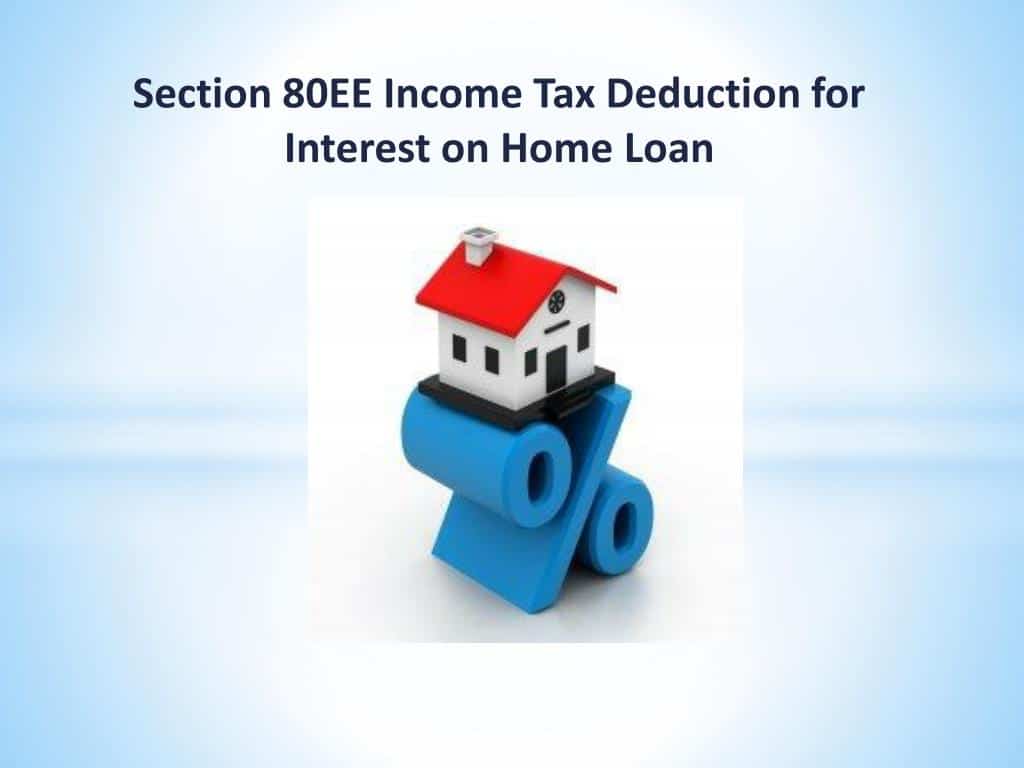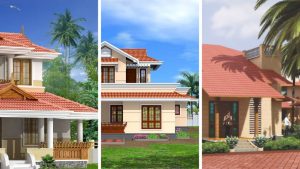
It is a dream to own a house and when it comes to purchasing one, there are scores of tax incentives and schemes to look into from time to time. There are several more being introduced to encourage more people to get their own houses. In budget 2019, section 80EEA was introduced as a vision to provide benefits of payment of interest on affordable housing loans. Let’s check out what section 80EEA income tax of India stands for.
What is Section 80EEA?
The Indian government 2014 launched the ‘Housing for All by 2022’ programme with the objective that all will be housed within the year 2022. Along with this programme, they also launched the Pradhan Mantri Awas Yojana (PMAY) which helps in incentivising home purchases via subsidiaries under the centre.
Section 80EEA, introduced by Finance Minister Nirmala Sitharaman, aimed to boost the ‘Housing for All by 2022’ programme by waiving payable tax on the first-time purchase of a property.
Section 80EEA covers the deduction of interest on home loans subject to a few conditions. The maximum deduction of taxes available under section 80EEA is ₹1,50,000 over and above the tax deductions available in section 24. This deduction in payable tax is for the financial year 2019-2020, specifically from 1st April 2019 to 31st March 2020.
latest update
Budget 2023 proposes that when calculating capital gains from the sale of a residential property, the cost of acquisition should not include any home loan interest claimed as an income-tax deduction by the seller throughout the holding term.
What is a Deduction Under Section 80EEA?
Section 80EEA was launched in the 2019 budget to help first-time home buyers save an additional ₹1.50 lakhs each year against the interests of the home loan they took under the condition that the property is “affordable”.
- Under section 24 (b), this deductions over and above the 2 lakh deduction limit.
- This deduction is available for housing units worth up to ₹45 lakhs.
- The “affordability” of the house is determined by the property’s carpet area. For a metropolitan city, the carpet area must be within 60 sq metres or 645 sq ft. For other cities, the carpet area is limited to 90 sq metres or 968 sq ft.
Section 88EEA of Income Tax Act: Deduction Amount
Let’s assume A has taken a home loan. This table will give you an idea of how much deductions A can avail under section 80EEA :
|
Total Interest |
Loan taken during |
Deduction using section 80EEA |
|
₹4 lakh |
2016-2017 |
nil |
|
₹3 lakh |
2019-2020 |
₹1 lakh |
|
₹5 lakh |
2019-2020 |
₹1.5 lakh |
|
₹3 lakh |
2018-2019 |
nil |
Section 80EEA of Income Tax Act: Eligibility Criteria to Avail Deductions
Tax deductions under section 80EEA are subject to certain conditions:
- The assessee should not own any residential property on the date of the sanction of the loan.
- The assessee should not claim any tax deductions under the section 80EE.
- The loan should be sanctioned between 1st April 2019 to 31st March 2020.
- The loan should have been taken from a “financial institution”.
- The stamp duty value of the residential property must be within ₹45 lakh.
- The carpet area of the property must not exceed 60 square metres in metro cities such as Kolkata, Hyderabad, Faridabad, Gurgaon, Ghaziabad, 12 Greater Noida, Noida, Delhi, Chennai, Bangalore, and Mumbai).
- For other cities, the carpet area needs to be 90 square meters.
Section 80EEA Income Tax Act: Time Limit
The perks of Section 80EEA are available for home loans that were given the green light between April 1, 2019, and March 31, 2022. If your loan falls within this timeframe, you can take advantage of tax deductions throughout your entire loan repayment journey. However, if you secured a housing loan after April 1, 2022, you won’t be able to claim the Section 80EEA deduction, as this benefit ceased on March 31, 2022.
Points To Remember About Section 80EEA Income Tax Act
- This section provides benefits exclusively for those buying their first home. To qualify, you must not already own any residential property when you apply for your home loan.
- A first-time home buyer is someone who doesn’t have property in their name when they apply for a home loan. Even if you’re a single working adult, you’re considered a separate household for tax purposes, making you a first-time home buyer even if your parents own properties.
- These benefits apply only to the interest payments on your home loan.
- You can claim a maximum deduction of Rs 1.50 lakh per year.
- These benefits are available for borrowers whose home loans were approved between April 1, 2019, and March 31, 2022.
- These deductions are only applicable to individual buyers. Companies, Hindu Undivided Families, and similar entities can’t avail of these benefits.
- You must secure your home loan from a financial institution, such as banks or housing finance companies, and not from family members, relatives, or friends.
- The property’s stamp value should not exceed Rs 45 lakh.
- You can only claim the benefit if the loan was taken for purchasing the property, not for reconstruction, repair, maintenance, etc.
- If you’re claiming deductions under Section 80EE, you can’t also claim them under Section 80EEA.
- You can continue to claim deductions under Section 80EEA until you’ve repaid your home loan.
- The law doesn’t specify that a first-time buyer must be a resident Indian to claim deductions, so even non-residents can benefit from Section 80EEA.
- To be eligible for Section 80EEA in big cities, your property’s carpeted area can’t be larger than 645 square feet (or 60 square meters). If your property is in smaller cities, it can be up to 968 square feet (or 90 square meters) to qualify.
- Section 80EEA doesn’t require the property to be self-occupied to claim the tax break. This allows renters to claim deductions while also benefiting from House Rent Allowance (HRA) benefits under Section 80GG.
- If joint owners are also co-borrowers, they can each claim deductions of up to ₹1.50 lakh under this Section, provided they meet all other conditions.
Difference Between Section 80EE and Section 80EEA of the Income Tax Act
|
Section 80EEA |
Section 80EE |
|
There exists no limit on the land’s value. |
Value of land must be within ₹35 lakh. |
|
The maximum available tax deduction is ₹1.5 lakh. |
The maximum available tax deduction is ₹50,000. |
|
The loan needs to be sanctioned during 1st April, 2019 to 31st March, 2020. |
Loan needs to be sanctioned between 1st April, 2016 to 31st March, 2017. |
|
The stamp suty value of the property must be up to ₹45 lakh. |
The value of the property must be ₹50 lakh or less. |
Difference Between Section 24 and 80EEA of the Income Tax Act
|
Section 80EEA |
Section 24 |
|
No requirement of possession (as sson as the interest payment is started, exemption can be claimed) |
You need to have possession of a property. |
|
Allows loans taken from financial institution and/or banks only. |
For exempting section 24, loans taken from relatives or friends with interest being paid to them is allowed. |
|
The maximum available tax deduction is ₹1.5 lakh. |
The maximum available tax deduction is ₹2 lakh. |
|
Conditions to clain tax deduction under section 80EEA:
|
No such conditions exist. |
How to Calculate Tax Under Section 80EEA?
Calculating Tax Without Investing in Property
Say the annual salary package of A is ₹15 lakh.
The standard tax deduction for Indians = ₹40,000
Therefore, the total taxable income for A = ₹15 lakh – ₹40,000 = ₹14.60 lakh
Now, we can say that A falls in the ₹12.5 lakhs – ₹15 lakh tax bracket.
Therefore, the highest rate at which A will be taxed = 30%
Here’s how the ₹14.60 lakh will be split for tax deductions:
- ₹2.5 lakhs at 0% = 0
- ₹2.5 lakh at 5% = ₹12,500
- ₹5 lakh at 20% = ₹1 lakh
- ₹4.6 lakh at 30% = ₹1.38 lakh
- cess at 4% = ₹10,020
Therefore, the total becomes = ₹2,60, 520
Calculating Tax While Investing in a Property
Suppose, A invests in a maiden property so that his tax outgo lowers. The property A bought is ₹45 lakhs. A takes 80% of property value, i.e., ₹36 lakh as home loan at an interest rate of 8%.
Therefore. EMI to be paid will be = ₹34,403
Total interest in 15 years of tenure = ₹25,92,624
Total payable in 15 years of tenure = ₹61,90,624
Under section 80C, A can make ₹1,29,522 from his income tax-free.
Under section 24, A can claim ₹2 lakh as tax deduction against the paid interest.
Under section 80EEA, A can claim the remaining ₹82,319 as tax deductions (overall limit is ₹1.5 lakh).
Therefore, the total deduction will be = ₹4,12,841
After A applies the standard deduction of ₹40,000,
The total taxable income of A will be = ₹15 lakh – ₹40,000 = ₹14.60 lakh
After all of the above tax deductions under the various section,
The total taxable amount of A will be = ₹14,60,000 – ₹4,12,841 = ₹10,47,159
Here is the split of A’s income to calculate tax:
- ₹2.5 lakh at 0% = 0
- ₹2.5 lakh at 5% = ₹12,500
- ₹5 lakh at 20% = ₹1 lakh
- ₹47,159 at 30% = ₹14,148
- Cess at 4% = ₹5,066
Therefore total tax outgo = ₹1,31,714
Now total savings as against the earlier outgo for tax when not investing in any property:
₹2,60,520 – ₹1,31,714 = ₹1,28,806
The Bottom Line: Facts About Section 80EEA of the Income Tax Act
People qualified for the rebate can claim tax deductions throughout their entire term of repaymenet of home loan even though deductions under section 80EEA is available for home loans asnctioned till march 2020. Under the Pradhan Mantri Awas Yojana, a single earning member of the family will be deemed a separate household when calculating tax deductions. A financially independent unmarried buyer is also considered a separate household and can claim tax deductions under section 80EEA for his first purchase of property.
Section 80EEA FAQs:
1. What is Section 80EEA?
Section 80EEA provides a deduction for the interest paid on a home loan meant for affordable housing.
2. Who is eligible for Section 80EEA?
New homeowners who are buying a house for the first time can get some tax benefits through Section 80EEA, but there are a few conditions: The loan must be from a bank or housing finance company, the property’s stamp duty value should not exceed Rs 45 lakhs, and they shouldn’t be claiming any deductions under Section 80EE.
3. What is the difference between 80EE & 80EEA?
Section 80EE and Section 80EEA of the Income Tax Act offer a helping hand to people buying their first homes. They let you reduce the amount of your income that’s subject to tax. You can get up to ₹50,000 and ₹1,50,000 in deductions through Section 80EE and Section 80EEA, respectively, for the interest part of the home loan monthly payments.
4. Is proof required for 80EEA?
You’ll need some specific documents when you want to get a tax break under Section 80EEA. To get this deduction for the interest you pay on your home loan, make sure to provide an interest certificate when you file your income tax with the government.
5. Can I claim 80EEA in 2023?
The 80EEA tax benefit is designed to help people buy affordable homes, meaning your house should cost 45 lakhs or less. You can take advantage of this deduction if you secured a loan between April 1, 2019, and March 31, 2022.
6. How do I add 80EEA to my income tax?
In India, if you’re a first-time homebuyer and you purchase an affordable property, you can benefit from a tax deduction of up to Rs. 1.50 lakhs under Section 80EEA. This deduction is in addition to the initial and standard deduction offered under Section 24(b). As a result, your total annual tax savings can add up to a substantial amount.
7. Can I apply for 80EE and 80EEA?
If you’re a first-time homebuyer and you’re taking advantage of tax deductions under Section 80EE, keep in mind that you can’t also claim deductions under Section 80EEA. In other words, you can’t double-dip when it comes to these tax benefits.





